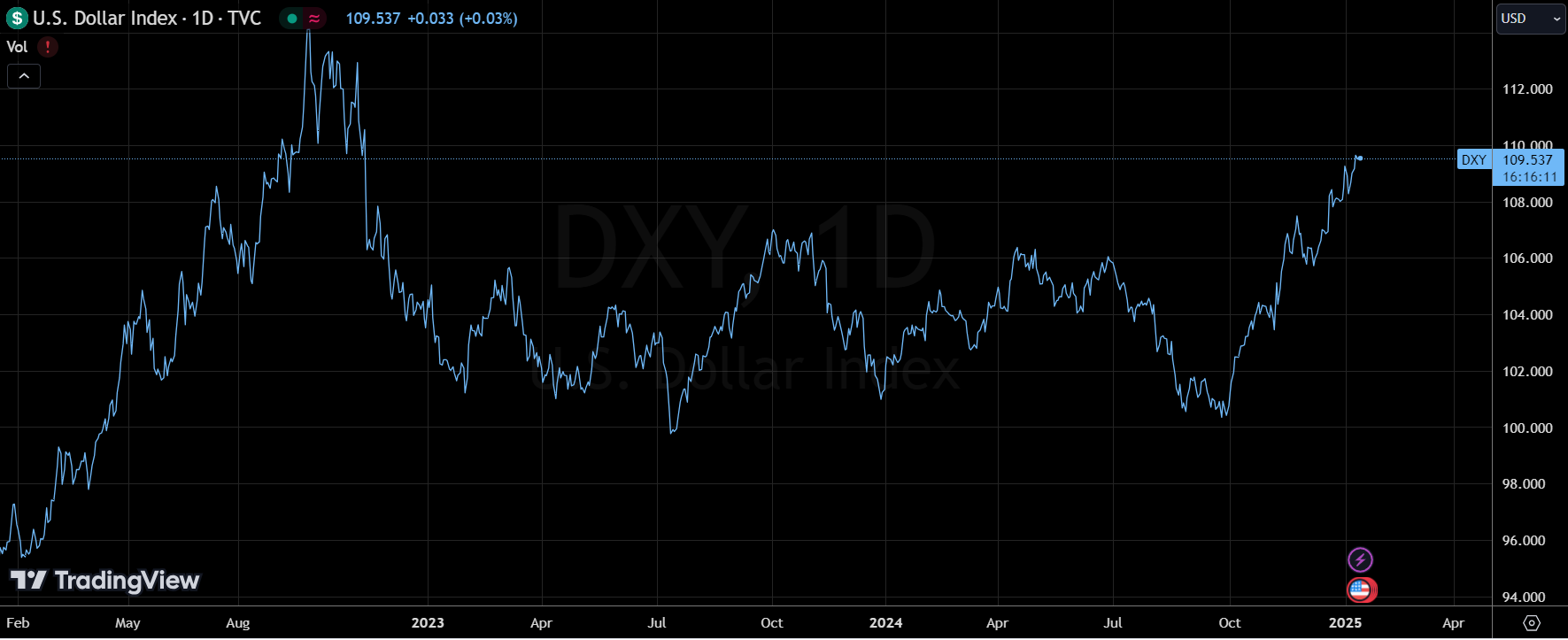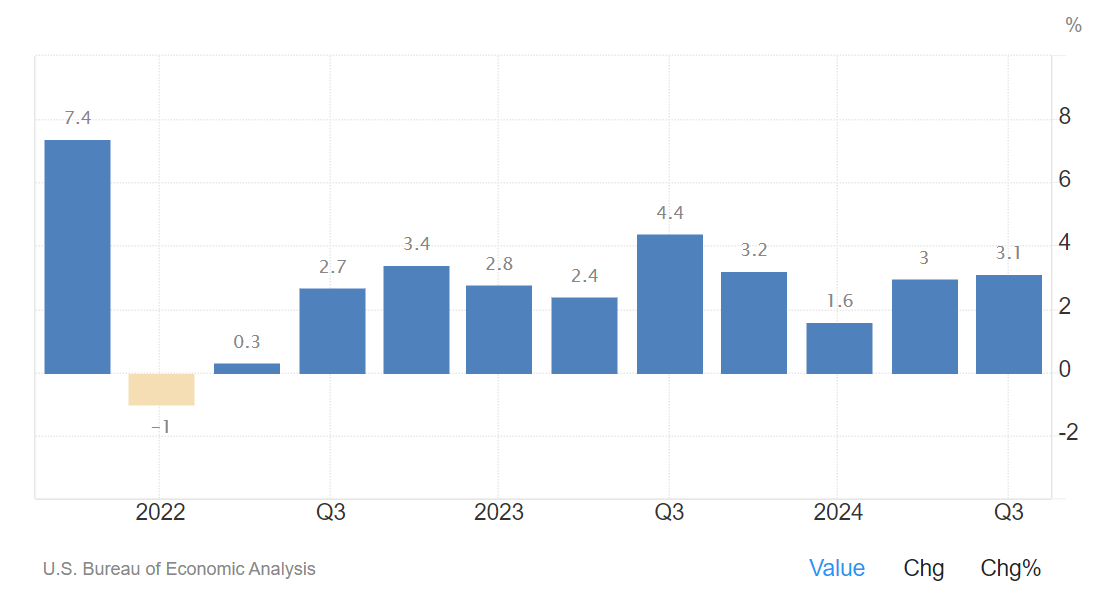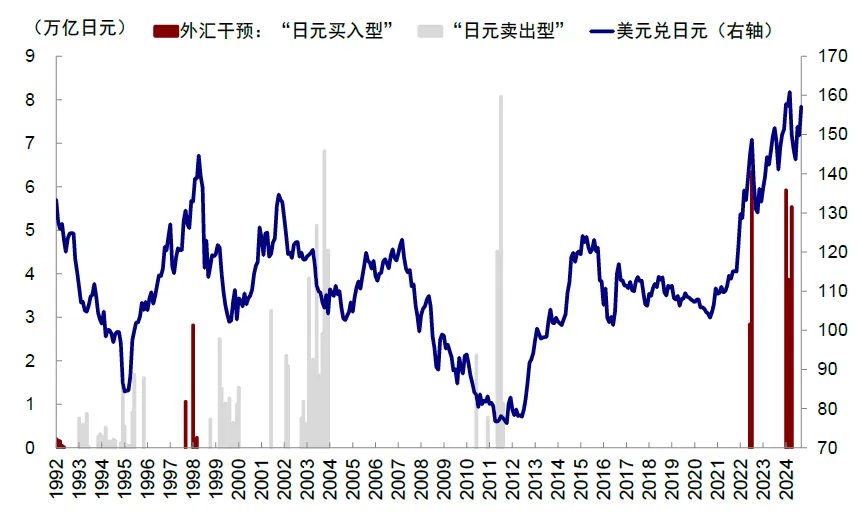Opportunies of US Treasury Bonds
The continued climb in U.S. bond yields has gotten a lot of market attention in recent times.So what has driven this round of yields upward?And what are the potential investment opportunities worth tapping into?
Core reasons for the rise in U.S. bond yields
The current round of rise in US bond yields can be attributed to the following four main factors:
Enhanced U.S. economic growth expectations: recent economic data performance has been impressive, intensifying the market's expectations for a stronger U.S. economy.
Supply-side shocks: Over-expected issuance of U.S. debt has pushed up term premiums.
Weakened expectations of rate cuts: Investors' confidence in future rate cuts has waned.
Stronger US dollar leads to liquidity crunch: lack of US dollar liquidity triggers a wave of US bond selling.
Core drivers in detail
1. Support from US economic data
The U.S. economy has shown a strong recovery recently.From employment to consumption, a number of data have been surprisingly positive.The middle class and above have benefited from technological advances, while average households have been able to reap the benefits of e-commerce platforms like Temu.Even with occasional natural disasters (e.g. California fires), the resilience of the overall economy should not be underestimated.
2. The impact of over-expected debt issuance
Pressure on the supply side is another big driver.The U.S. Treasury is expected to issue $823 billion in Treasuries in the first quarter of 2025.This size is second only to the over-expected debt issuance in the second quarter of 2023.At the same time, demand for Treasury auctions has been declining; for example, the bid multiple in the latest 10-year Treasury auction was only 2.53, a record low since October.
This phenomenon not only reflects the decline in investor demand for U.S. debt, but also exacerbates the rise in term premiums.Investors need higher yields as risk compensation in the face of uncertain Fed policy.
3. Chain reaction of a strong dollar
The strengthening of the United States dollar has further exacerbated the tightness of dollar liquidity overseas.Some overseas institutions holding United States debt have had to sell it in exchange for cash.Although there is no clear data indicating that overseas investors have significantly reduced their holdings of U.S. debt since December, the number of overseas agency securities deposited with the Federal Reserve has declined, which side by side confirms the existence of liquidity pressures in the market.

4. Uncertainty over Federal Reserve policy
The market is divided on the future policy path of the Federal Reserve.On the one hand, high interest rates and tapering have kept liquidity tight; on the other hand, the Fed may adopt a more accommodative stance in the future.Policy uncertainty makes the yield curve more volatile.
Why this moment could be a good opportunity to take a bottom.
Although the upward trend in U.S. bond yields is a cause for concern, this phenomenon also offers potential trading opportunities for investors.
1. The dampening effect of high interest rates on economic growth
A sustained rise in U.S. bond yields could further dampen financing needs and weigh on short-term economic growth.In this case, economic data may slow down again, creating conditions for yields to fall. 2.
2. U.S. bonds are close to "oversold" status
The market's short sentiment on US bonds has eased significantly.Looking at interest rate futures and implied market expectations, the current forecast for only one rate cut for all of 2025 is clearly pessimistic.If market expectations for rate cuts rise to 2-3 while US bond supply returns to late 2024 levels, rates could fall back 3-5 bps, while the term premium could fall by 50 bps.
Under this scenario, U.S. bond yields are expected to fall back to the 4.2%-4.3% range.
3. Fed may stop tapering
In addition to rate cut expectations, the possibility of the Fed halting tapering in the first half of 2025 is also noteworthy.A pause in tapering would reduce supply pressure on U.S. bonds in the market, which would provide support for a fall in yields.
$iShares 20+ Year Treasury Bond ETF(TLT)$ $USD Index(USDindex.FOREX)$ $US10Y(US10Y.BOND)$ $US30Y(US30Y.BOND)$ $US20Y(US20Y.BOND)$ $.IXIC(.IXIC)$ $.DJI(.DJI)$ $.SPX(.SPX)$
Disclaimer: Investing carries risk. This is not financial advice. The above content should not be regarded as an offer, recommendation, or solicitation on acquiring or disposing of any financial products, any associated discussions, comments, or posts by author or other users should not be considered as such either. It is solely for general information purpose only, which does not consider your own investment objectives, financial situations or needs. TTM assumes no responsibility or warranty for the accuracy and completeness of the information, investors should do their own research and may seek professional advice before investing.
- Twelve_E·01-14[Eye]LikeReport


